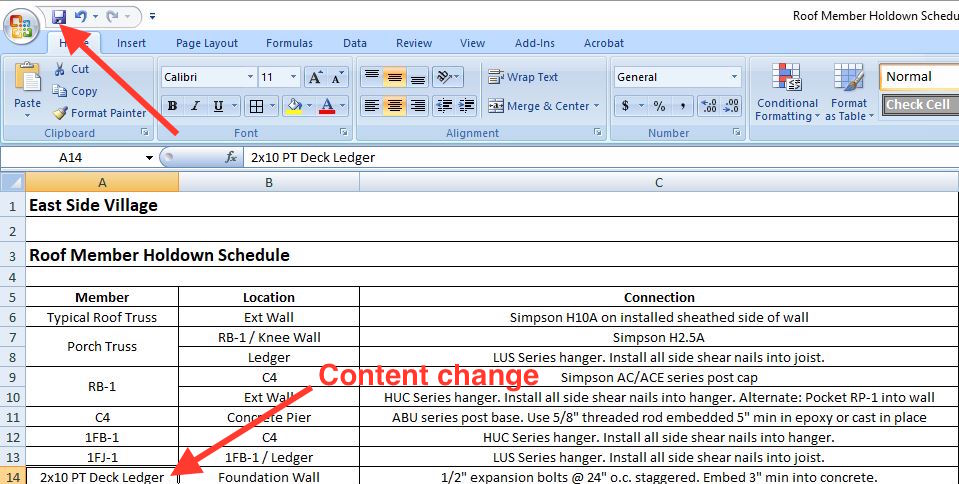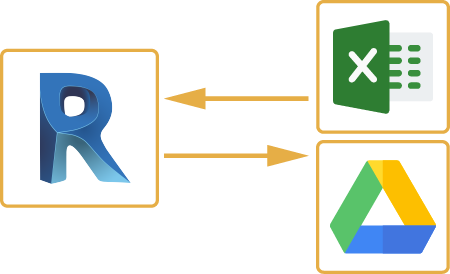Enhance Your Operations with Effective Revit Add Ins
Wiki Article
Excel-to-Revit: A Game-Changing Process for Architectural Layout - Revealing the Tricks
Are you tired of investing hours on building layout? Look no more! Introducing excel-to-revit, the game-changing workflow that will reinvent your layout procedure. With excel-to-revit assimilation, you can streamline your architectural design, unlock efficiency, and take full advantage of cooperation within your group. In this post, we will certainly reveal the secrets of this effective device, revealing you just how it can change your style jobs. Get prepared to take your architectural design to the next degree with excel-to-revit!The Power of Excel-to-Revit Combination

Imagine the ease of being able to edit and upgrade project information in Excel, and instantaneously see those modifications mirrored in your Revit design. Say goodbye to hand-operated data access or tedious updates. With Excel-to-Revit assimilation, you can save time and lower errors by leveraging the power of Excel's features and formulas to immediately generate exact data in Revit.
Not just does this combination enhance performance, yet it also enhances partnership amongst employee. You can easily share Excel files with associates, who can after that import the information right into their Revit versions. This advertises a smooth exchange of information and ensures that every person is collaborating with the most current data.

Simplifying Architectural Layout With Excel-To-Revit
Improving building layout is simplified with making use of Excel-to-Revit (revit tool). With this powerful combination, you can maximize your workflow and conserve valuable time throughout the style procedure. By leveraging the capabilities of Excel and Revit, you can effortlessly move data between both systems, removing the need for hands-on information entry and decreasing the threat of mistakesExcel-to-Revit allows you to import and export data easily, allowing you to easily update and modify your building designs. You can produce timetables, compute quantities, and produce reports in Excel, and after that move that information directly into your Revit design. This combination makes certain that your layout info is constantly current and integrated, eliminating the need for hands-on updates and minimizing the possibilities of incongruities.
By making use of Excel-to-Revit, you can also make the most of the powerful computational capabilities of Excel. You can carry out complicated estimations, analyze information, and automate recurring tasks, all within Excel. Then, with just a few clicks, you can import the outcomes back right into Revit, permitting you to make enlightened layout choices and maximize your building designs.
Unlocking Efficiency: Exploring the Excel-to-Revit Operations
Optimize your efficiency by perfectly integrating Excel and Revit for an extra effective operations. With the Excel-to-Revit process, you can unlock a whole brand-new degree of effectiveness in your architectural design procedure. By using the power of Excel's information administration abilities and combining it with the adaptability and accuracy of Revit, you can improve your design procedure and save valuable time.Among the crucial benefits of this integration is the capacity to import and export data between Excel and Revit. This means that you can easily move project details, such as space schedules or product quantities, from one software to the various other, eliminating the demand for hands-on data entrance and decreasing the possibilities of errors. You can additionally produce custom solutions and calculations in Excel to automate recurring tasks and execute complex estimations, which can then be flawlessly integrated right into your Revit models.
Moreover, the Excel-to-Revit operations allows for far better coordination and partnership in between employee. With Excel acting as a main information hub, several staff member can work on various aspects of the task concurrently, sharing and updating info in real-time. This not just boosts communication however additionally ensures that everybody is dealing with one of the most up-to-date data, getting rid of the threat of variances.
Taking Full Advantage Of Cooperation: Excel-to-Revit for Architectural Teams
By effortlessly integrating Excel and Revit, building groups can considerably improve cooperation and achieve a lot more effective design outcomes. When utilizing this effective workflow, you can easily move data between Excel spread sheets and Revit designs, improving the style process and enhancing interaction among team participants.Additionally, by leveraging Excel's powerful estimation abilities, you can perform intricate computations and analysis on your style data, driving and giving useful insights educated decision-making. This integration additionally enables you to export information from Revit to Excel, enabling you to develop extensive records, charts, and charts for presentations and evaluation. This collective process promotes efficient interaction and sychronisation amongst staff member, as Excel acts as a main hub for data monitoring and sharing.
Overall, by welcoming the Excel-to-Revit workflow, building groups can achieve greater degrees of partnership, performance, and accuracy in their style procedure. revit tools. This assimilation empowers teams to interact perfectly, making certain that everyone is on the very same web page and adding to the success of the task
Unveiling the Tricks of Excel-to-Revit Assimilation

Among the keys of Excel-to-Revit integration is the ability to take advantage of the power of formulas and estimations in Excel to drive parameters and produce complicated geometries in Revit. You can connect Excel spread sheets to Revit family members, allowing you to input data directly into the spreadsheet and have it immediately update in the Revit design. This enhances the layout procedure and makes certain precision and consistency across the job.
An revit add ins additional trick is the capability to develop personalized timetables and records in Excel, making use of information removed from Revit. This permits you to assess and envision job details in such a way that is not feasible within Revit alone. You can quickly produce quantity take-offs, cost estimates, and project timelines, providing beneficial understandings for decision-making and task administration.
Additionally, Excel-to-Revit combination enables efficient cooperation among employee. Numerous individuals can work on the same Excel spread sheet all at once, making it less complicated to work with and track modifications. You can also make use of Excel's commenting attribute to offer feedback or connect style modifications.
Conclusion
By combining the power of Excel and Revit, engineers can currently work a lot more efficiently, save time, and create far better designs. Begin including excel-to-revit integration into your building layout process today and reinvent the means you work.With just a few clicks, you can import the outcomes back right into Revit, allowing you to make educated style choices and maximize your building designs.
By utilizing the power of Excel's information administration capabilities and incorporating it with the versatility and precision of Revit, you can streamline your layout process and conserve useful time.
By perfectly incorporating Excel and Revit, building teams can substantially enhance collaboration and achieve extra effective design end results. When using this effective workflow, you can conveniently transfer information between Excel spread sheets and Revit designs, streamlining the style process and improving communication amongst group members.In addition, by leveraging Excel's effective calculation capacities, you can carry out intricate calculations and evaluation on your design information, providing useful understandings and driving educated decision-making.
Report this wiki page